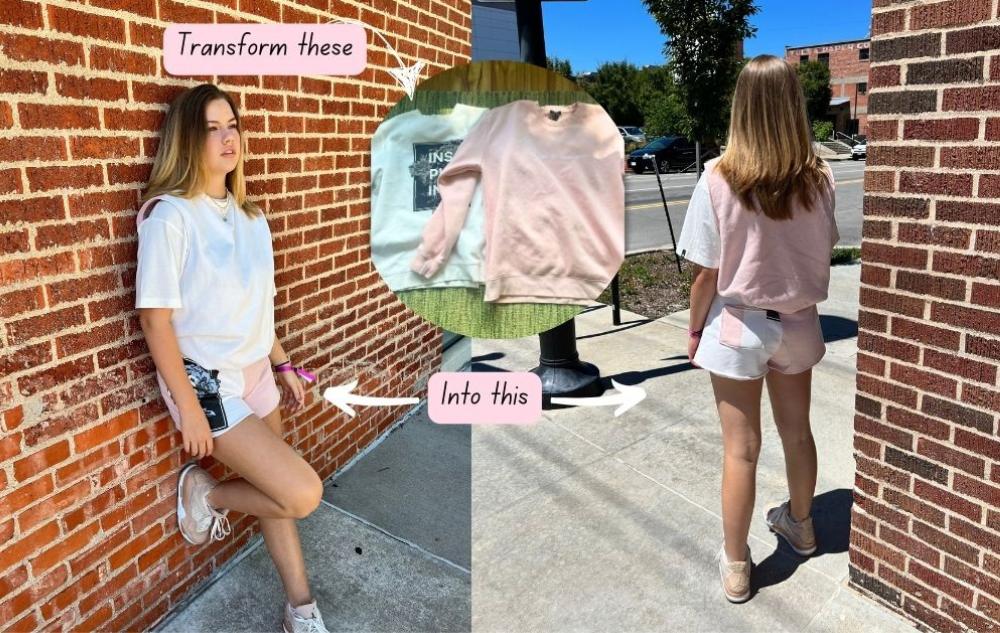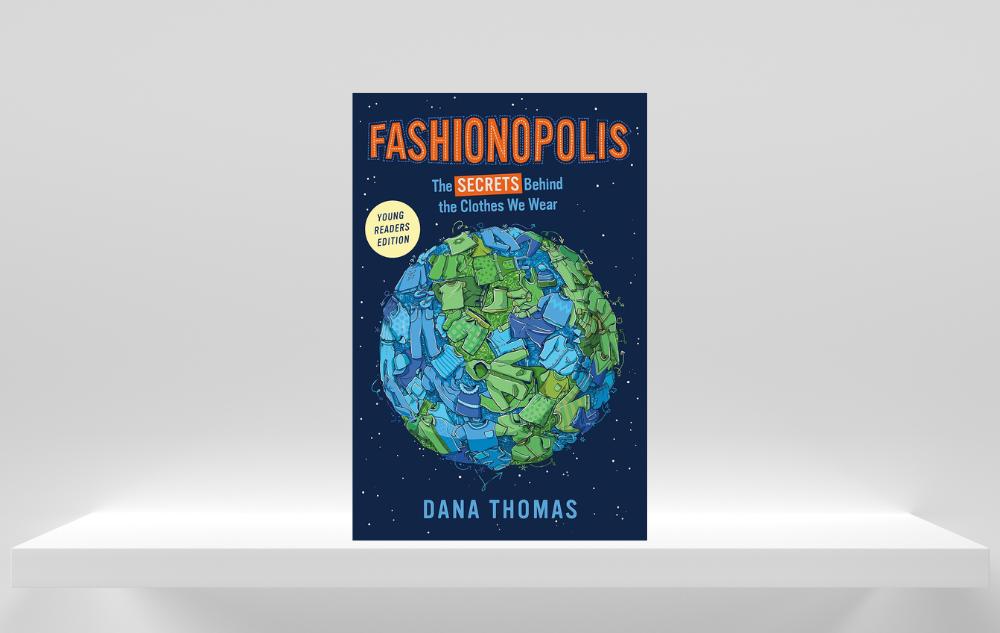Many young people in Generation Z, including my daughter Caroline, are part of a growing movement transforming the fashion narrative. They are rejecting the constant push toward consumption, fueled by aggressive marketing, and challenging the industry to consider the benefits of conscious fashion. This thoughtful generation is beginning to understand that fashion isn’t just about the final design. It’s about where textiles come from, how they are produced, the chemicals involved, and the lasting impact on both people and the planet.
At the heart of the conscious fashion movement is the realization that fast fashion is both an environmental and ethical disaster.
So, what exactly is fast fashion?
Fast fashion refers to the rapid production of inexpensive clothing that mimics current trends seen on runways or worn by celebrities. There’s increasing demand to get styles into stores at breakneck speed and at low prices. Technological advancements have accelerated this process, enabling companies to track trends in real time and bring new designs to market within weeks. While this has made fashion more accessible, it has also led to overproduction, waste, and a throwaway culture.
This overproduction has severe consequences. From pollution and unsafe labor practices to a culture of disposability, fast fashion is causing harm on multiple fronts. The chemicals used in dyeing fabrics and the microfibers shed by synthetic clothes damage ecosystems—especially our oceans.
Social Media’s Role in Fast Fashion
Social media plays a central role in promoting fast fashion. Influencers, celebrities, and targeted ads on platforms like Instagram, TikTok, and YouTube fuel the desire for instant gratification. Young women and girls, in particular, feel pressured to keep up with ever-changing trends to maintain social relevance. This constant cycle of new trends promotes overconsumption, leading to the purchase of low-quality clothing that is quickly discarded. Not only does this harm the environment, but it also fosters a negative self-image as people struggle to keep up with the financial and emotional demands of this fast-paced fashion culture.
Recommended watch: The HBO documentary Brandy Hellville & the Cult of Fast Fashion offers a compelling look into the rise of a teen-focused fashion brand and the toxic culture that surrounds it.
Gen Z Pushes Back with Conscious Fashion Trends
Despite these challenges, the tide is turning. A growing percentage of Gen Z, aged 12 to 27, is questioning the foundations of fast fashion and reevaluating their relationship with clothing. They are shifting toward sustainable practices and using their purchasing power to demand change.
Social Media’s Positive Influence on Sustainable Fashion
While social media contributes to the fast fashion problem, it’s also helping drive positive change. Influencers promote the idea of “shopping your closet”—encouraging people to repurpose and creatively style what they already own rather than continuously buying new items. This shift has sparked a growing trend of upcycling apparel and textiles, fostering creativity while reducing waste.
My daughter Caroline began her journey into sustainable fashion around 12 years old. Deeply impacted by the documentary The True Cost, which offers a sobering and eye-opening look at fast fashion’s human and environmental toll, she started designing and creating her own clothes. She’s been heavily influenced by DIY fashion accounts like The Essentials Club. The Essentials Club champions the philosophy “Make what you can and ethically source the rest.” This message aligns perfectly with Caroline’s passion for creativity and sustainability.
“Watching videos from The Essentials Club not only inspired me but also taught me the skills to make my own clothing,” shared Caroline Bates. “It gave me the confidence and tools to create and bring my own designs to life.”
Her first project was a three-quarter zip pullover jacket made from a fleece remnant and an old terrycloth towel. She designed the pattern herself and crafted her first piece of fashion apparel!



The Rise of Thrift Shopping and Upcycling
Thrift shopping has become a key strategy among Gen Z to reduce waste and embrace conscious fashion. In fact, the U.S. secondhand clothing market reached $43 billion in 2023, growing at a rate seven times faster than the broader U.S. clothing market. Gen Z’s emphasis on finding unique, sustainable pieces has helped normalize and even popularize secondhand shopping.
Caroline has taken this trend to heart, transforming hand-me-downs, thrift store finds, and lesser-used items into new, stylish creations. For example, she turned a $20 thrifted sheath dress into a chic party outfit for her homecoming dance. She refashioned her brother’s old sweatshirts into a trendy top-and-shorts set. Next, she crafted a Barbie-core ensemble from a tablecloth and bedsheet for the Barbie movie premiere.
“When I reimagine and repurpose materials and clothes into new fashions, it’s not just about creating something unique. It’s about giving new life to things that might otherwise be thrown away. It makes each piece so much more special knowing I transformed it with my own creativity,” said Caroline.

Caroline’s two-piece ensemble for the Barbie movie premiere, made from a tablecloth and bedsheet.



Innovative Startups Tackling Textile Waste
Beyond individual efforts, innovative startups are also addressing textile waste. Companies like For Days and The Renewal Workshop are finding ways to repurpose discarded materials and create a circular economy within fashion. In this circular economy, clothes are continuously recycled and repurposed instead of ending up in landfills.
One smaller company that particularly inspires Caroline is Sew By Sew, led by Sarah, a thrifting and upcycling enthusiast. Sarah’s small business helps others access deadstock fabrics that would otherwise be discarded. Sarah’s practices have further fueled Caroline’s interest in using sustainable materials in her projects.
Rethinking the Textile Industry
Caroline and her peers are shining a light on the unsustainable practices of the fast fashion industry and advocating for thoughtful alternatives. They understand that, much like the farm-to-table movement in the food industry, fashion has its own supply chain that needs scrutiny. Gen Z is demanding transparency, asking where their clothes come from, how they are made, and whether workers are treated fairly.
This shift is driving real change within the industry. Brands are being forced to reconsider their use of chemicals, water, and labor practices. The fashion world is slowly adapting to the growing demand for more sustainable and ethical practices.
A Hopeful Future for Fashion
The fashion industry is at a crossroads, and Gen Z is leading the charge toward a more sustainable future. By embracing thrift shopping, upcycling, and supporting ethical brands that prioritize transparency and sustainability, young people are helping to reshape fashion for the better. Together, they are building a future where fashion is creative and expressive but also responsible and eco-friendly.
Dive deeper with this recommended read. It’s perfect for young readers interested in conscious fashion and making a difference!
Fashionopolis: Young Readers Edition by Dana Thomas
Dana Thomas helps young readers understand fast fashion: its history, its human price, and the dirty truth of its effects on our environment.

Written by Amy Bates
CMO and Community Builder
“At the core of everything I love are people – family, friends, and colleagues. The opportunity to focus my skills on an effort to leverage the capabilities of technology to improve the quality of life and help protect the planet brings my professional and personal lives together toward a common goal. One Life. One Planet. One Planet Life.”












